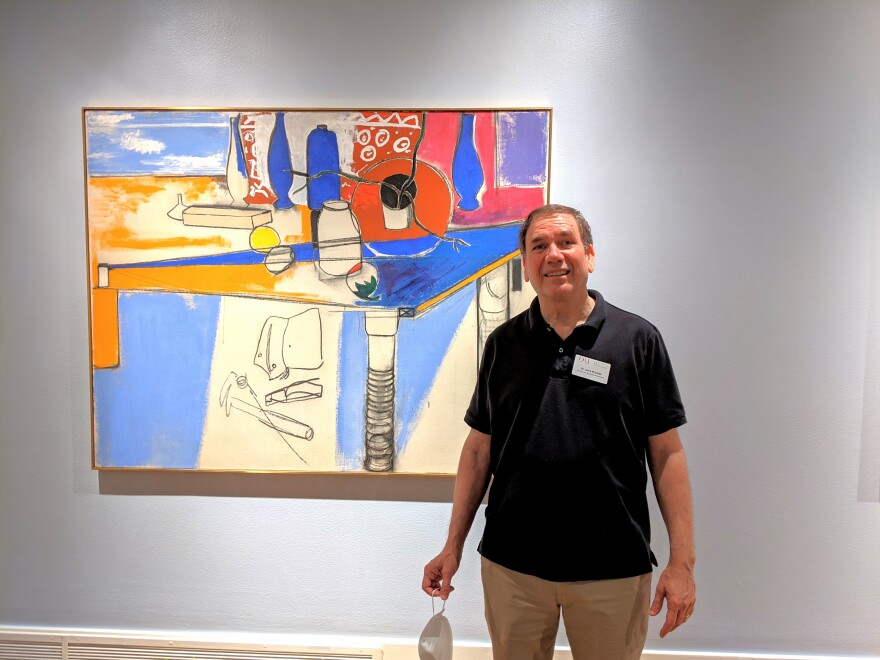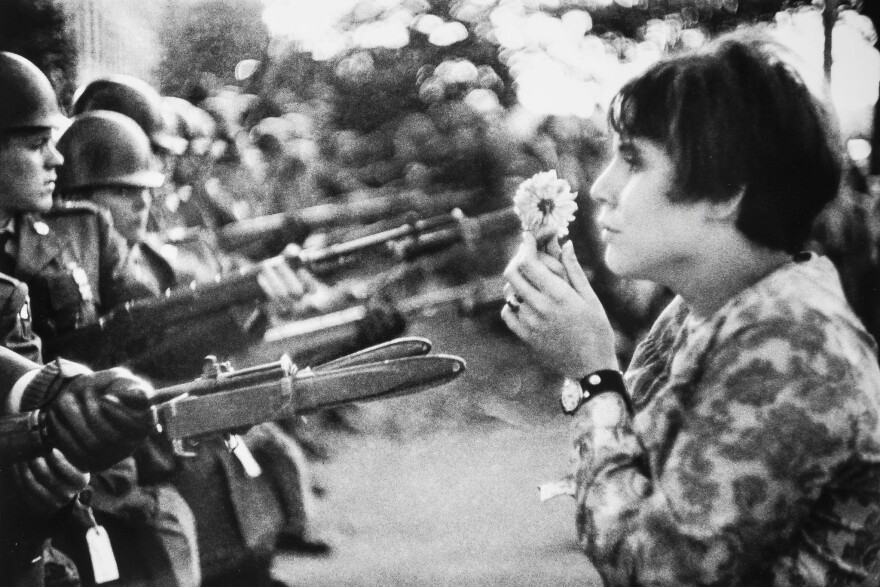The Dayton Art Institute has a large exhibition of 1960s artwork on display right now. “Changing Times: Art of the 1960s” was put together by Chief Curator Jerry Smith. He tells WYSO’s Jason Reynolds that works from that decade speak to a lot of what we see going on in America today.
SMITH: This really is a decade of remarkable change with people exploring new ideas not only in art, but responding to all the changes taking place in society—political changes, the culture movements with the women's movement, with civil rights, and all these things play through in the exhibition. I don’t know if there were movements in so many directions as you find in the 60s. So, there’s something for everybody to really enjoy, and this one of those shows that you can come and look at it and think about it and I know you’ll find something of interest.

REYNOLDS: This is really a who’s who of 1960s artists. You’ve got Andy Warhol, Jasper Johns, Roy Lichtenstein… All the big names. I’m curious about the perhaps lesser known—but no less important—artists you included. What should a museum-goer be on the lookout for in this show?
SMITH: In this one, there’s a lot of artists that people may not be familiar with and a lot of them have local ties. George Morrison, for instance, he was part of that first abstract expressionist movement coming out of the 1940s and 50s, and in the 1960s, he may have been the best known Native American artist. And he was an instructor when the Dayton Art Institute had the school, which closed in the 70s, but in the 60s, it was a four year accredited school and there were a lot of people involved. Several of those artists are on view here and people with Ohio ties.
REYNOLDS: DAI put together a mixtape for this exhibit. It’s a Spotify playlist. Can you tell me a little bit about that and also how music became so central in art and culture and politics in the 60s?
SMITH: I think you just said it right there: music was very important to everything going on. It spoke to the newfound freedoms that people were seeking, and the Spotify playlist was selected by our lead educator, Casey Goldman. So, she put this together and really did seek out songs that spoke to the themes in the exhibition, from abstract things to a little more realistic things. One of the songs that really jumped out to me is by The Meters. They’re kind of funk based, which speaks to what we love in Dayton. We love the funk here in Dayton. So, hearing The Meters on the soundtrack was terrific.

REYNOLDS: What did I miss? What should I have asked you about the show and I forgot to?
SMITH: One of the things you could ask is what things will surprise people, and what surprises me in pulling all of this together is how varied the works are—the kind of mental leap from say a Joan Mitchell, that is an abstract expressionist painting where you see her kind of movements as she’s creating the work. Compare that to the minimalist work that’s in the exhibition or the conceptual work, like Sol LeWitt, where he has a design. It’s a template really for a wall painting. So, he creates a small sketch that could then be expanded to cover a massive wall, and just those ideas on what art means, from color field painting to figurative work. It’s touching on a lot of things that when you look at the times, the 1960s, you then see how that plays out in future decades when you look at art history.
“Changing Times: Art of the 1960s” runs through September 12, 2021.

